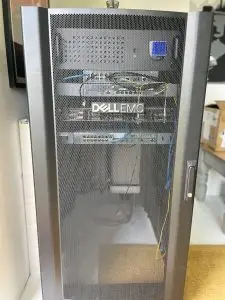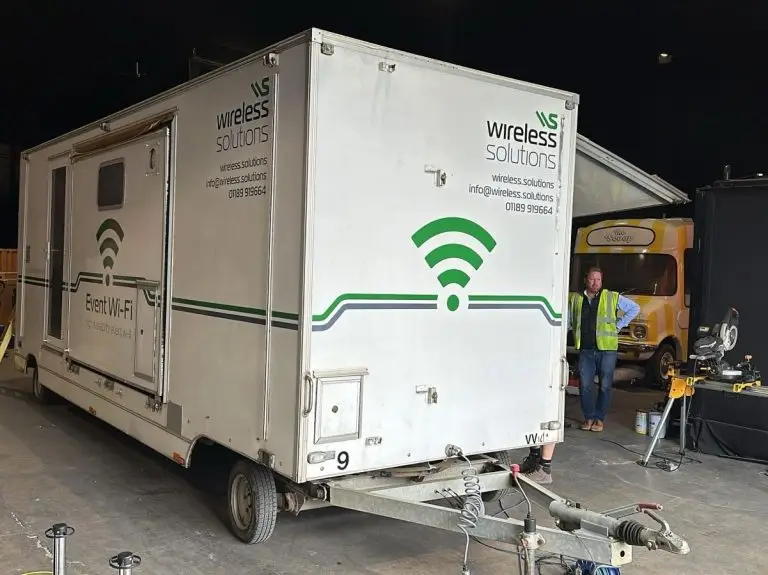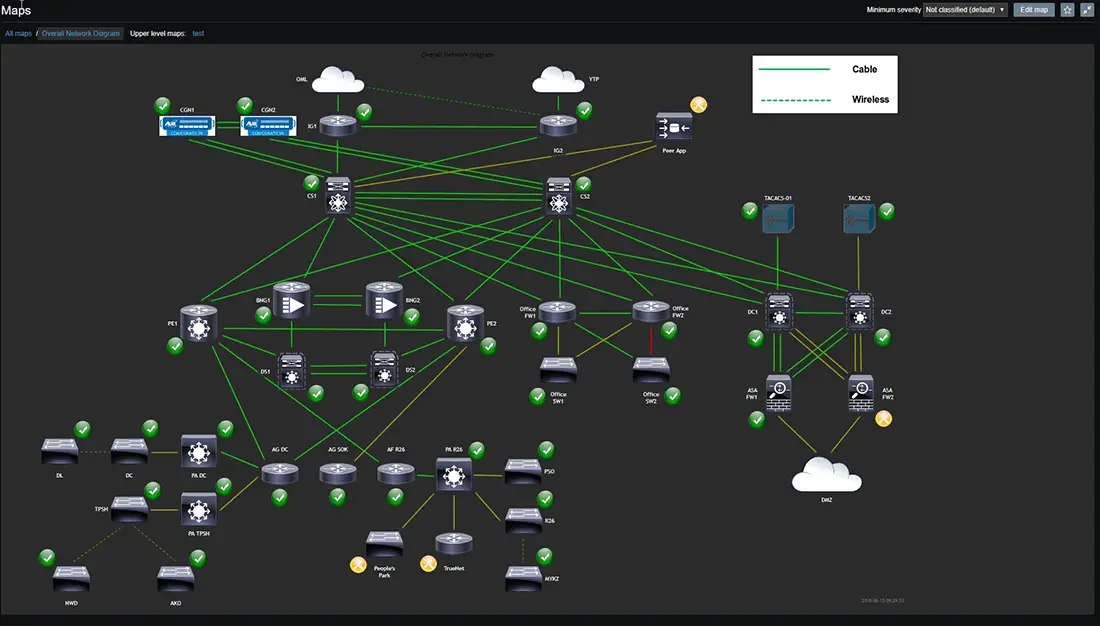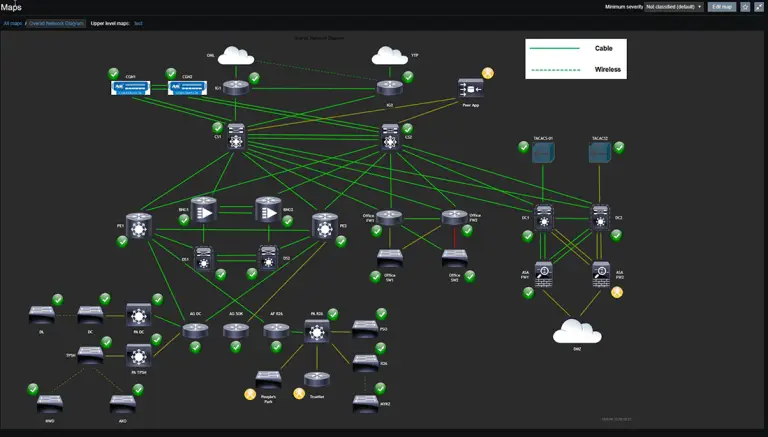With so much event of our modern day event production, support and logistics requiring us to be online, we need absolute faith in our WiFi solutions to avoid awkward downtime, gaps in content streaming, missing payments and more.
Yet why do we still hear of unreliable WiFi at events, conferences and exhibitions? Places where they already have a fixed line internet connection more than capable of supporting the bandwidth required on site?
It seems that, at Wireless Solutions, our biggest challenge for 2024 is not in providing WiFi networks that deliver 100% uptime, but more in in persuading producers, traders and contractors that they don’t need to bring in their own standalone Starlink solution in order to to avoid using official networks. Such is the state of the market.
When delving into the problematic events, it seems that a lot of the issues from inadequate WiFi testing. But what should event WiFi providers test before going live and throughout the live event, and how can production managers be reassured them of their provider’s testing processes?
Here we cover 4 essential tests for event WiFi providers to improve reliability in the quest for flawless connectivity.
Fibre infrastructure
When building a large site-wide event WiFi network, if you can make use of a fibre connection, then do so. Fibre is the most reliable internet supply that only fails if the fibre is cut or damaged.
For permanent building like expo centres, this will already be available so you’re half way there with your connectivity.
And here’s the thing. Often when internet fibre is installed, it is assumed that it will work forever.
But over time, water in the ground, heavy machinery, site excavation and other even contractors can cause damage to your fibre. Which means that it could be a flaw in your flawless network.
So number one, if you’re using fibre then you should test all cores, end-to-end, before use. During our time we’ve had to replace many aged fibres that are damaged, to ensure a bullet proof internet connection.
Network core/s

The network core is the heart of the communications network, through which all traffic passes to access the internet. Here we see a small core, but they can extend much larger, requiring their own trailer unit for space, ventilation and to keep them away from environmental risks like dust, dirt and water. We can see an example of this below, which is utilised for larger events:

On your core sits your technology that routes all traffic, controlling the flow of data to, and from, the internet. Needless to say it’s a pretty important part of a larger WiFi solution and, for us, one of our key differences in the capabilities that we can provide.
Our enterprise-grade network core is built to the spec of modern day enterprise businesses, and routes traffic with a greater degree of control and flexibility. It gives production teams the ability to have individual WiFi networks for different teams and functions, controlling access down to device level for extra security. Best practice is to create individual networks to serve specific functions – traders, production, media, guests, VIPs etc. If your WiFi is going to work seamlessly then you’ve got to control who can access each network.
Once your network design is complete, your network core should be tested at 3 stages:
-before going to site
-when on-site
-and before go live
When you bring your network up, you’ll know if there is a problem with your core, as you won’t be able to bring any of your network up. No network core = no WiFi. Whatsoever.
If you can bring up some access points but not others, you know that your network core infrastructure itself is working, so you’ll need to test your technology/software and edge infrastructure.
At Wireless Solutions, our high availability solutions have an extra core built in, as you never know when a piece of hardware is going to fail. These things do happen, it’s how you manage it that’s important. Building resilience in is key to event-critical WiFi.
Top tip: Build an standby core into your WiFi network in order to achieve 99.99% uptime. Never cut corners here.
Technology / Software
Event connectivity specialists either license software from a vendor, or, like us, develop their own in-house.
In-house or licensed?
There are certainly benefits of retaining control of the development and rollouts of in-house technology.
Third party software updates often don’t come with any notice. If your vendor rolls out an update the night before, or during an event, it could wreak havoc.
There was a case at one of the largest UK events in July 2024, which struggled with connectivity throughout its duration, at huge impact to its revenue. Why? A software update that simply wasn’t compatible with the devices on the network. With the rollout happening overnight, there wasn’t the time to test it before golive. And sure enough it didn’t work.
Most WiFi providers license technology from software providers like Cisco or Aruba. If an update is rolled out the day before a big event, you are at the mercy of it working with your network.
This is why it’s important to test your technology regularly. And while you can only control updates if you develop your own IP in-house, the more you test, the more likely you are to catch any potential issues and rectify them quicker.
Cost benefits
It is only the more advanced and technical WiFi specialists that invest in in-house expertise. Aside from the benefits of being in control of the compatibility of their technology, it also means that there are no ongoing license fees, and costs can often be reduced.
Edge infrastructure

When we talk about edge infrastructure, we’re referring to all of your pieces of hardware that connect to your core.
Whether connected wirelessly, or by cable back to your core, each piece of kit is a potential point of failure. Switches, routers, access points etc all need to be tested to ensure that they can come up and get online.
This is done once we have powered up and tested our network. After the fibre, core, and technology is all tested, we check every piece of infrastructure one-by-one, checking it is ‘green’ and can be connected to by devices.
For us, it’s easy to see any failures on our dashboard, allowing us to troubleshoot anything that doesn’t come up. Is it power, is it hardware failure, does it need a reboot?
By having this intelligence, we can see any issues that arise with a maximum notification of 5 seconds.
Monitoring

Once you’re happy with your pre-live and live testing, your monitoring equipment should continuously test your network throughout the event to proactively manage your uptime.
Here we can see green ticks and yellow crosses, showing the status of each core (there are two here as this is a high availability network), the status of each switch, and the status of each access point.
Alerts are set whenever the status of anything changes from green so it can immediately be investigated and any issues resolved.
With the most important part being the core (if this goes down then the whole network will go down), instant failover gives us time to troubleshoot a failed core and either resolve power issues or replace parts.
Top tip: Within your monitoring you should be aiming for a notification time of any failure of 5 seconds. This will allow you to be proactive, and communicate what is happening with your clients, before you hear about it from them first.
Summary
When it comes to event WiFi, it pays to never be complacent. Testing should be a part of the process, and never overlooked.
Allow time, ensuring that you have a power supply a good 24 hours before WiFi is required.
Top tip: We often use portable power supplies so that we can test all of our equipment should the mains power not be switched on in time for testing.
And if you need any help, just get in touch.

